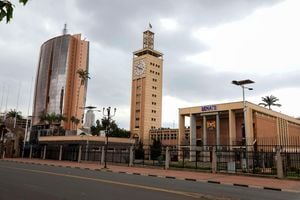Traffic jam: A disaster waiting to happen

Traffic jam at Sachangwan on the Nakuru-Eldoret highway on August 5, 2024.
Last week, a staggering 12-hour traffic jam on the Nairobi-Nakuru highway left motorists stranded, with some resorting to playing roadside football to pass the time. Stretching from Kimende to Flyover, this gridlock was more than an inconvenience—it was a stark warning about the growing inadequacies of one of Kenya’s most vital transport corridors.
The Nakuru-Nairobi highway, part of the Northern Corridor, plays a pivotal role in regional connectivity, linking Nairobi to western Kenya and neighbouring countries. It facilitates the movement of people, goods, and agricultural produce. However, it is increasingly clear that the highway is failing to keep up with rising demand. During peak periods like festive seasons, school opening days, or in the aftermath of accidents, the road often grinds to a halt, creating a ripple effect of disruptions.
The challenges are rooted in the highway’s outdated infrastructure, which was designed for a time when traffic volumes were much lower. Towns like Naivasha, Gilgil, and Nakuru have grown significantly, adding local traffic to an already overwhelmed road. Without sufficient bypasses or alternative routes, the entire burden of transporting goods and people falls on this single, narrow corridor.
Road transport
Compounding the issue is Kenya’s reliance on road transport. With limited public transportation options, many commuters and businesses rely on private vehicles, adding to congestion. The situation is worsened by delays in completing road upgrades, inconsistent enforcement of traffic rules, and poor coordination in handling traffic incidents.
The consequences of these gridlocks are both immediate and far-reaching. Economically, they translate into significant losses. Perishable goods spoil in transit, businesses miss deadlines, and valuable work hours are wasted in traffic. A recent report estimated that traffic congestion on Kenya’s major roads costs the economy billions of shillings annually. The human impact is equally concerning.
Emergency services, including ambulances and fire trucks, often find themselves stuck in traffic, unable to reach those in need. Drivers and passengers are left stranded for hours, sometimes without access to food, water, or proper sanitation. The environmental toll is also immense, with idling vehicles pumping large amounts of carbon dioxide into the atmosphere, contributing to pollution and climate change.
High-demand periods
Globally, in 2010, a 10-day traffic jam on China’s Beijing-Tibet Expressway left drivers stranded for days with limited access to provisions. In 2013, a snowstorm in Atlanta, USA, caused a highway shutdown that stranded thousands overnight, with many unprepared for the freezing conditions. These incidents underline the potential for humanitarian disasters when traffic jams escalate.
Nakuru-Nairobi highway risks becoming a flashpoint for similar crises. During high-demand periods, such as the festive season or school opening days, the situation becomes even more precarious. An accident on the highway can exacerbate the congestion, creating a cascade of delays and frustrations.
To avert a crisis, Kenya must take bold and immediate action. First, the highway’s infrastructure must be expanded to handle higher traffic volumes. This includes constructing bypasses around key towns and creating alternative routes to ease the pressure on the main road. Second, investment in public transport—particularly reviving the Nakuru-Nairobi railway—can provide a reliable alternative for commuters and goods transport. Third, better traffic management systems, including real-time monitoring and stricter enforcement of regulations, are crucial for keeping the highway flowing smoothly.
The Nakuru-Nairobi highway is more than just a road—it is a lifeline for millions of Kenyans and a backbone of the national economy. Yet, the gridlocks we are witnessing are a ticking time bomb. If action is not taken soon, the next 12-hour traffic jam could become a far more serious crisis. It’s time to fix this problem before it’s too late.
Dr Kiprono, PhD, is a history lecturer and trustee of the Uasu chapter at Alupe University, Kenya; [email protected]





